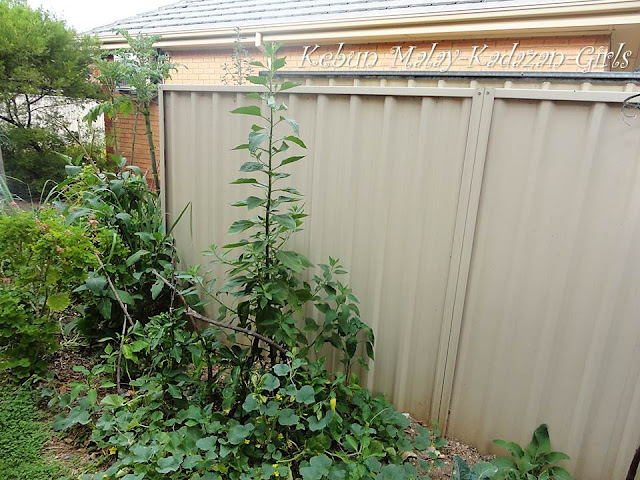Spring onion or the salad onion taste milder than other onion. Its hollow leaves finely chop and top on fried rice/noodles, porridge or other dishes making it more appealing. Not just making dishes appealing or decorative but add more nutrition good for the health no doubt. My children and I prefer spring onion that does not produce bulb unlike onions or shallots leaves for toppings because it has mild taste and not hot.
Last year autumn, we transplanted some spring onion seedling under sunflower plants to make the garden more productive. Those spring onion does not seem to mind sitting under the sunflower because it still received direct light from the sun in the morning. We also had a row of carrots growing in front of the spring onion plants.
Spring onion does not need to be harvest whole, can be treated as come and cut again plant. My husband uses a lot of spring onion to cook especially when he makes misoshiru (miso soup). He is the Japanese chef in the family. My sons like prawn and spring onion toast. We had surplus spring onion and when spring came last year our spring onion goes to produce seeds. Bees really like the spring onion flower, there are always hovering around the plant at the moment.
Spring onion is surprisingly drought-hardy when well-established. We left them growing with neglect on the patch and the plants still live till today forgotten. Interestingly, this spring those spring onion plants starts to flower again producing seeds. Furthermore, the flower are much bigger compared to previous year when it flowers for the first time. Spring onion are biennial plant. So I thought when the plant has produce seeds on its second year (last year spring), it will eventually dies. But spring onion continue evergreen growing and surprisingly producing seeds again this year. The spring onion flowers in its second spring are more well pollinated as we harvest more seeds this year and the quality of the seeds looks much better compared to last spring.
This is how our flowering spring onion plants in its second spring season looks at the moment. Last spring, we planted a chilli plant in between these spring onion plants and we had no encounter or problem with pest on this chilli plant. This over-wintered chilli plant survived and will need a little bit of hair cut getting rid of old-leaves as it has already start to sprout new baby leaves and looks really disheveled at the moment.
The dried pods opening up and pop goes the seeds.
Have a nice weekend gardening!











































